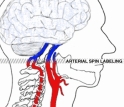|

Press Release 05-203
Researchers Use Imaging Technique to Visualize Effects of Stress on Human Brain

Method tracks water molecules in blood
November 22, 2005
The holiday season is notorious for the emotional stress it evokes. Now, researchers at the University of Pennsylvania School of Medicine have come up with a non-invasive way to see the effects of psychological stress in an area of the brain linked to anxiety and depression. This research has important implications for how practitioners treat the numerous long-term health consequences of chronic stress.
In the study, which is reported in the Nov.21 online edition of the Proceedings of the National Academy of Sciences, researchers used functional magnetic resonance imaging (fMRI) to detect an increase in blood flow to the prefrontal cortex in individuals subjected to stress. Further, the increase remained even when the stressor was removed, suggesting the effects of stress are more persistent than once thought.
Whereas most previous fMRI studies have relied on indirect measures of cerebral blood flow, the Penn team, led by John A. Detre, measured blood flow directly, using a technique called arterial spin labeling. The technique is non-invasive, relying on magnetically "tagging" the water molecules in subjects' blood.
This research is supported by the National Science Foundation, the National Institutes of Health, and the U.S. Air Force.
For a complete story, see the University of Pennsylvania release.
-NSF-

Media Contacts
Mitch Waldrop, NSF 703-292-7752 mwaldrop@nsf.gov
Olivia Fermano, University of Pennsylvania 215-349-5653 olivia.fermano@uphs.upenn.edu

The National Science Foundation (NSF) is an independent federal agency that
supports fundamental research and education across all fields of science and
engineering, with an annual budget of $6.06 billion. NSF funds reach all 50
states through grants to over 1,900 universities and institutions. Each year,
NSF receives about 45,000 competitive requests for funding, and makes over
11,500 new funding awards. NSF also awards over $400 million in
professional and service contracts yearly.
 Get News Updates by Email Get News Updates by Email
Useful NSF Web Sites:
NSF Home Page: http://www.nsf.gov
NSF News: http://www.nsf.gov/news/
For the News Media: http://www.nsf.gov/news/newsroom.jsp
Science and Engineering Statistics: http://www.nsf.gov/statistics/
Awards Searches: http://www.nsf.gov/awardsearch/
| 


